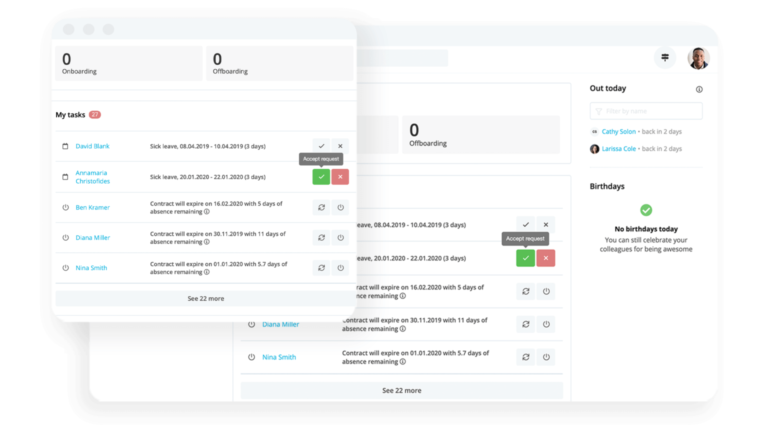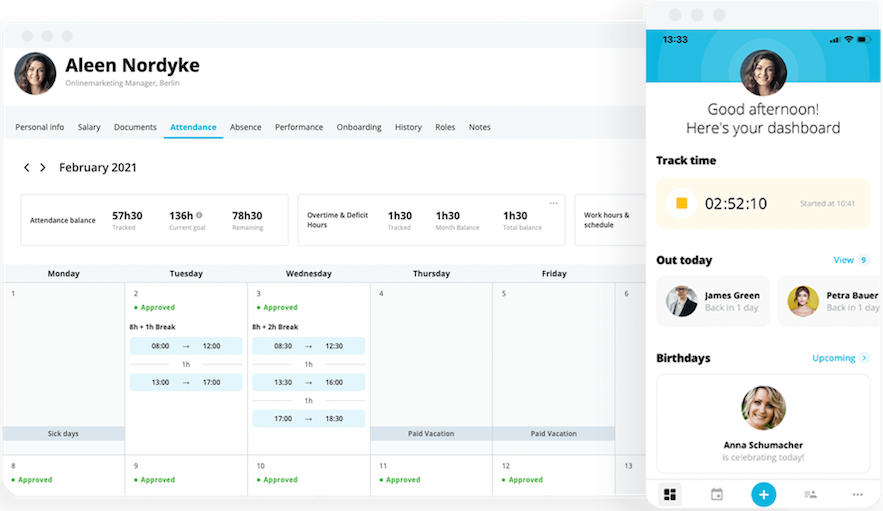What Does Job Design Really Mean?
Job design can drive productivity in your workforce and help your organisation meet its goals. It can also have a huge impact on employee wellbeing, resulting in happier, healthier employees.
In this post, we’ll discuss some of the key principles of job design, the different approaches you could take and some best practices and strategies to set you up for success.
Help your organisation become 'Recession Ready.' Download our guide today.What Is Job Design?
Job design is the process of determining the exact roles and responsibilities a job should include, as well as the systems and processes used to complete tasks. The main purpose of job design is to optimise work processes for maximum productivity.
That said, an important benefit of job design is that it can improve employees’ quality of work life by organising work in a way that prioritises their physical and mental wellbeing.
How Is Job Design Connected to Employee Wellbeing?
Job design and employee wellbeing can go hand in hand. When tasks are organised appropriately, employees are less likely to be overwhelmed with work. This can reduce stress, and since stressed employees don’t produce their best work, this can also have an impact on productivity as a whole in your organisation.
When it’s done right, job design should also promote healthy physical work practices. For example, it might include rotating sedentary and dynamic tasks and incorporating breaks into each employee’s workday so that they don’t spend too much time sitting down.
These simple measures can have a big effect on wellbeing: data from 2021 shows that nearly 60% of employees reported musculoskeletal pain, most commonly in their lower back, neck and knees — which could be a result of too much time sitting down.
The 8 Principles of Effective Job Design
Job design encompasses a number of different factors that all help to create a healthy and happy workforce.
Here are eight principles to keep in mind when working on job design in your organisation:
Variety: Repeating the same task over and over can quickly get boring — which leads to disengagement. With physical tasks, it can also result in strains or injuries. Varying the tasks employees complete lets them widen their skill sets and benefit from a more interesting workday.
Responsibility: Employees perform better when they feel a sense of responsibility for their work. Each employee should be able to understand the significance of the projects they work on and how their work fits into the organisation as a whole.
Autonomy: While job design should provide guidance on how tasks are completed, it should also leave room for employees to make their own decisions and work in a way that makes sense to them.
Task identity: People get more satisfaction from work when they’re able to see a whole project through to completion. Instead of dividing everything up into tasks and distributing these among employees, consider allowing employees to take ownership of a project from beginning to end.
Feedback: Providing employees with constructive feedback helps them improve. For best results, set up processes for giving regular feedback to each employee, such as a weekly one-on-one with their line manager.
Participation: People tend to be more active in working towards goals when they have had a say in the decision-making process. Good job design should include opportunities for employees to share their ideas.
Recognition and support: Job design should encourage employees to do their best work — which means providing recognition when they do well. It’s also important to provide the support employees need to work to their full potential — whatever that means for each individual.
Working environment: Lastly, job design should include setting up a safe working environment that encourages healthy working practices like taking regular breaks. The exact parameters of the workplace vary widely depending on the job — but you could start by asking your employees what improvements they would like to see.
Common Approaches to Job Design
There are several different approaches to job design that you could take, including:
Job enlargement: This means adding additional tasks to an employee’s workflow to make their work more interesting and rewarding.
Job rotation: This involves allowing employees to experience other parts of the business, which can allow them to improve their knowledge and potentially uncover hidden skills.
Job enrichment: This is a wider concept that involves adding extra dimensions to a job to make it more interesting and motivating, for example by giving employees more responsibility and autonomy. It might also involve elements of job enlargement or job rotation to add variety and help employees to learn.
15,000 organisations trust Personio for this reason

Just like LUSH and Premier Inn, trust Personio's all-in-one HRIS to upgrade your people operations for now and into the future. Click below to learn more about us.
Book Your Demo7 Strategies and Best Practices for Effective Job Design
The way a job is designed should be aligned with the goals of your organisation, which means there’s no one right way to do it.
That said, here are a few best practices and strategies you can incorporate into your job design process:
1. Implement New Job Design Gradually
If you’re redesigning an existing job, start on a small scale by testing out new processes on a pilot project. Not only does this allow your employees to get used to new systems and ways of working, but it also gives them the opportunity to provide feedback before the new job design is fully rolled out.
2. Seek Input From Employees and Managers
Your employees and supervisors will likely have valuable insights into the best ways of performing certain tasks. They will also be able to tell you which processes and workflows don’t work well. By seeking their input early in the process, you can avoid wasting time later on.
3. Vary Tasks to Promote Physical and Mental Wellbeing
For jobs with a physical component, it’s important to vary tasks so that employees don’t spend too long using one particular muscle group, as this can lead to injuries. Mental tasks should also be varied so employees don’t have to spend a long time working on extremely difficult or boring tasks, which can lead to stress, disengagement or burnout.
4. Offer a Balance of Static and Dynamic Tasks
Similarly, good job design should provide a balance between static and dynamic tasks so that employees don’t spend too long in the same position. For jobs which require employees to work at a desk, it’s important to encourage regular breaks so that they’re not sitting down for too long.
5. Don’t Overload Employees… But Don’t Underload Them Either
Giving an employee too much work will only lead to exhaustion, overwork and burnout. But if you don’t give them enough to do, your employees will become bored and disengaged. It’s important to carefully balance employees’ workloads so they have enough to keep them busy without getting overloaded.
6. Vary Mental Tasks (and Give Employees the Freedom to Choose)
By varying the mental tasks that you require each employee to complete, you can help ensure they produce their best work without burnout. It’s also important to let employees decide when they complete certain tasks. For example, one employee might prefer to get simple, administrative tasks done in the morning, and save the more intensive work for the afternoon, when they feel more focused.
7. Seek Continuous Feedback and Reassess Regularly
Good job design should be done with people in mind, and shouldn’t be set in stone once it’s finished. Instead, seek regular feedback from employees, and be open to switching things up if they suggest a different way of working.
Frequently Asked Questions on Job Design
Here are the answers to some FAQs about job design:
What Is Job Design?
Job design is the process of creating a job in a way that maximises productivity and allows an organisation to achieve its goals, while also improving work-life for employees.
How Do You Design a Job?
There’s no one correct way to design a job, but here are some basic steps you could follow if you’re new to job design:
Assess your current work practices to spot areas for improvement. Involve employees and supervisors in your early conversations.
Analyse the tasks that will be required for the job and identify the tools, systems and training that will be needed.
Design the job by detailing the methods that will be used to complete tasks, the rest/work schedules you will implement and the training that will be required. Be careful not to overload or underload your employees.
Implement the changes gradually so employees have time to get used to new processes and give feedback.
Re-evaluate your job design regularly based on feedback from employees, unions, safety officers and managers.
What Are the Benefits of Effective Job Design?
Effective job design can result in greater productivity that moves a company towards its goals. For employees, it can mean lower stress levels, higher engagement and a decreased likelihood of burnout.
Boost Efficiency and Eliminate Wasted Time With People Workflow Automation
Job design is all about redesigning your workflows, systems and processes for better efficiency and happier employees. People Workflow Automation with Personio can set you on the right path by connecting together your tools and teams to drive productivity across your organisation.
Get in touch to find out how Personio could support your people operations and business goals.
